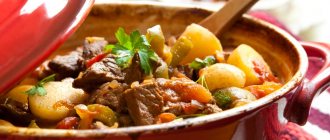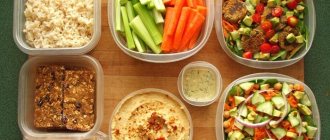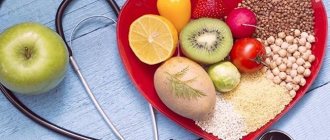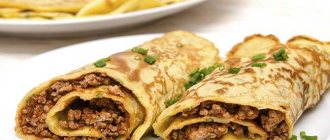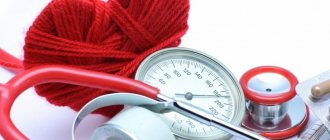- How to lower blood sugar
- Signs and dangers of high sugar levels
- Diet correction
- Lifestyle change
- Express ways to lower blood sugar
- Switch to healthy sugar substitutes
Blood glucose (sugar) levels are a serious marker of health and well-being, and unhealthy simple carbohydrates raise them dangerously. Sweeteners, which are produced under the name, help to avoid them. But what to do if glucose levels are already elevated and how to lower blood sugar? We answer pressing questions in the article.
Signs and dangers of high sugar levels
It’s not just people with diabetes who need to lower their sugar levels and control their glucose levels. This pathology occurs in other endocrine disorders that require immediate action, specialist help and daily attention.
Glucose increases due to stress, obesity, liver dysfunction, immune system, alcohol abuse and many other reasons. Its high level is a serious stress for the pancreas. It cannot cope with the load, which is why the body’s metabolism is globally disrupted and dangerous diseases develop, including prediabetes and diabetes.
The normal blood sugar level for an adult is 3.3-5.5 mmol/liter on an empty stomach and up to 6.6 mmol/liter after meals.
If the parameter increases, the person becomes weak, gets tired quickly, begins to feel dizzy, has a headache, his weight jumps unreasonably and greatly, and his vision deteriorates. Other signs of the need to lower sugar are frequent urination, itchy skin, the appearance of a white coating on the tongue, and constant thirst.
If these symptoms occur, you need to take action and consult a doctor as soon as possible. Exceeding the blood sugar threshold can lead to dangerous pathologies, including:
- diabetes and its complications - ketoacidosis, hyperglycemic coma;
- dangerous vision pathologies - glaucoma, cataracts, complete blindness;
- renal failure;
- heart attack, stroke and vascular atherosclerosis.
Siofor
You can buy Siofor tablets in different dosages, strictly according to your prescription. The active ingredient of Siofora is metformin. The drug belongs to the biguanide group and affects the uptake of glucose by cells. The drug is prescribed to people with type 2 diabetes (including those who are overweight). The drug is suitable for those who do not benefit from lifestyle changes. "Siofor" is used both as monotherapy and as part of a complex treatment of severe diabetes (together with other tablets or against the background of insulin injections). The drug is indicated for children over 10 years of age (as a single drug or in combination with insulin).
Contraindications:
ketoacidosis, intolerance to the drug components, serious kidney and liver diseases, pregnancy and breastfeeding, low-calorie diet. Also, Siofor should not be used simultaneously with contrast agents containing iodine.
Siofor
Berlin-Chemie/Menarini, Germany
- type 2 diabetes mellitus, especially in overweight patients with ineffective diet therapy and physical activity.
It can be used as monotherapy or in combination with other oral hypoglycemic drugs and insulin. from 359
963
- Like
- Write a review
Diet correction
To maintain glucose within normal limits and reduce its level, you must first adjust your diet - eliminate or seriously limit foods that cause sugar levels to rise. This:
- sugar-containing sweets and products - baked goods, confectionery, carbonated drinks, juices and industrial jams;
- dishes containing simple carbohydrates - pasta, white flour bread, sweet fruits and honey, potatoes;
- canned and processed meat products - sausage, ham;
- industrial sauces, pickles, fatty meats.
It is necessary to give preference to foods that lower blood sugar. Their difference is a low glycemic index (less than 20-30) and the content of substances that normalize glucose. These are primarily green vegetables. Cabbage, spinach, zucchini, cucumbers, asparagus, celery and a variety of greens slow down the absorption of glucose and normalize metabolism.
Cinnamon is also useful. It directly affects sugar in the body, normalizes protein metabolism, and improves the functioning of the pancreas. Other spices that help overcome glycemia include fenugreek and rosemary (they reduce the amount of “bad” cholesterol in the body), bay leaf, ginger, turmeric and cloves.
You also need to add a number of other products to your diet:
- vegetables with a low glycemic index - onions, turnips, Jerusalem artichokes, pumpkin, beets, radishes;
- cereals and legumes - buckwheat, peas, lentils;
- fruits and berries - sour and sweet and sour apples, citrus fruits, black currants, cherries, blueberries and cranberries;
- sources of healthy fats - avocado, sunflower seeds, olive oil, salmon and sardines;
- nuts (little by little) - almonds, hazelnuts, walnuts, cashews;
- whole grain bread – reduces the level of “bad” cholesterol, has a low glycemic index and contains fewer carbohydrates than regular bread;
- oat bran – due to beta-glucans in its composition, it reduces the level of glucose, insulin and lipids in the blood;
- Garlic – It is found in many medications and dietary supplements for diabetics, as it significantly lowers blood sugar levels and improves insulin sensitivity.
Januvia
These tablets from the gliptin group are sold exclusively by prescription. The active substance of the drug is sitagliptin. Januvia is used in combination therapy: together with metformin or with insulin injections. The dosage of the drug is selected very carefully, only after collecting all the data on the patient’s health. Januvia tablets are prescribed to lower sugar levels while following a diet and physical activity. In combination with other means, if lifestyle changes have not shown positive results.
Contraindications:
age under 18 years, type 1 diabetes, ketoacidosis, pregnancy and breastfeeding. The drug is prescribed with caution to people with kidney disease, pancreatitis and while taking other medications.
Januvia
Merck Sharp and Dome, Netherlands
Monotherapy: as an adjunct to diet and exercise to improve glycemic control in type 2 diabetes mellitus. Combination therapy: in type 2 diabetes mellitus to improve glycemic control in combination with metformin or a PPAR-γ agonist (eg, thiazolidinedione) when diet and physical activity in combination with monotherapy with the listed drugs does not lead to adequate glycemic control.
from 1401
617
- Like
- Write a review
Lifestyle change
In addition to adjusting the grocery list, it is important to change your daily routine. Glucose levels will be reduced by quitting smoking and excessive alcohol consumption - habits that are dangerous to the pancreas. It is important to drink at least 1.5-2 liters of water per day, including herbal infusions, green tea, linden decoction, in order to more effectively remove sugary compounds from the body.
It is advisable to “break” the entire daily amount of food into portions and eat little by little, but more often. Optimally, five times a day, including two small snacks. Proper sleep and control of emotional health reduce stress, and therefore glucose levels.
Add sports to your life. The more a person moves, the more efficiently the body uses glucose. You can choose one of the types of load recommended by doctors:
- swimming;
- yoga, Pilates, gentle exercises like tai chi;
- cycling or roller skating;
- slow jogging;
- hiking, Swedish walking (with special poles).
Drugs
The purpose of taking medications is to maintain glucose levels within a certain range of values. At the same time, too little sugar can be just as “harmful” as high sugar. The threshold of digital values is determined by the endocrinologist. After the start of treatment, there may be a long way to select the optimal therapy, since the results are assessed not the next day according to glucometer readings, but only after 3 months according to the analysis of glycated hemoglobin.
Drugs affecting insulin resistance
This group increases the sensitivity of body cells to insulin, body cells (muscle, fat, etc.) begin to more actively capture glucose from the blood.
Biguanides. The most famous drug is Metformin (Glucophage) and its extended-release form (Glucophage Long). Metformin remains the drug of choice, despite the fact that the history of its use goes back more than 60 years. It is usually prescribed first if there are no contraindications.
Flaws:
- long-term use of metformin can lead to B12-deficiency anemia, so periodic monitoring of B12 in the blood is necessary;
- possible discomfort in the gastrointestinal tract.
The advantages include:
- low risk of hypoglycemia;
- no effect on weight;
- positive effect on lipid profile;
- affordable price;
- reducing the risk of diabetes with low glucose tolerance.
Glitazones (Thiazolidinediones). Used since 1996. Pioglitazone is the most widely used active substance from this group.
Flaws:
- swelling of the limbs;
- weight gain;
- reduce bone mineral density and increase the risk of fractures, more so in women;
- slow onset of action;
- high cost.
Advantages:
- reducing the risk of problems with large vessels;
- low risk of a critical drop in sugar levels;
- normalization of biochemical blood parameters for fats;
- potential protective effect on pancreatic cells;
- reducing the risk of transition of low glucose tolerance to diabetes mellitus.
Among the disadvantages of glitazones is weight gain.
Drugs that enhance insulin secretion
Sulfonylurea derivatives (SUM):
- Chlorpropamide, Tolbutamide (“old” drugs, practically not used);
- Glibenclamide, Diabeton MB, Amaryl (more modern).
This group stimulates the release of insulin from the pancreas. On the one hand, there is a rapid decrease in blood glucose levels, on the other, there is a risk of developing hypoglycemia. The affordable price and possible positive effect on small vessels make the drug often prescribed, but the negative effects include rapid addiction, which can negate the effect of taking it, as well as a possible increase in body weight.
Drugs with incretin activity
These substances help restore sufficient insulin synthesis by the pancreas in response to food intake.
Dipeptidyl peptidase-4 (DPP-4) inhibitors:
- Januvia;
- Galvus;
- Ongliza;
- Tragenta.
These drugs have a fairly high price, and are also expected to influence the development of pancreatitis, but this data has not yet been confirmed. Positive actions:
- do not affect weight;
- have a low risk of hypoglycemia;
- have a potential protective effect on pancreatic B cells.
Ready-made combination drugs with metformin are convenient:
- Janumet;
- Galvus Met;
- Comboglise Prolong;
- Vipdomet.
Glucagon-like peptide-1 receptor agonists (GLP-1 receptor agonists):
- Baeta, Baeta Long;
- Victoza, Saxenda;
- Lyxumia;
- Trulicity.
Glucagon-like peptide-1 receptor agonists are injected into the subcutaneous fat of the abdomen, thigh, or upper arm once daily.
These drugs are injectable and come in the form of syringe pens, but they are not insulin. The medicine is injected into the subcutaneous fat on the abdomen, thigh or shoulder once a day, preferably at the same time. Treatment requires certain skills of use, conditions; consumables (needles) are needed. After using a syringe pen, needles must be removed and thrown away; not everyone follows these rules, which can lead to infection at the injection sites and damage to the device. Another possible problem is the syringe pen falling and failing. Compared to tablet forms, these drugs have an impressive list of positive effects:
- low risk of excessive drop in glucose levels;
- reduce weight, blood pressure;
- a decrease in mortality from cardiovascular diseases was recorded;
- possible protective effect on pancreatic cells.
The disadvantages include:
- discomfort in the digestive tract;
- possible formation of antibodies;
- unproven risk of pancreatitis;
- high price.
Drugs that block the absorption of glucose in the intestine
Alpha-glucosidase inhibitors. The drug on the market is Acarbose. It blocks the absorption of carbohydrates from the digestive tract. Despite the advantages of:
- low likelihood of hypoglycemia;
- reducing the risk of transition of low glucose tolerance to diabetes mellitus;
- lack of weight gain from the drug.
Its effectiveness is quite low , the dosage regimen is inconvenient - 3 times a day.
Drugs that inhibit renal glucose reabsorption
Gliflozins (NGLT-2 inhibitors):
- Forxiga;
- Jardines;
- Canagliflozin.
Taking these drugs causes glucosuria, that is, the excretion of glucose in the urine, which helps reduce hyperglycemia in diabetes mellitus. In addition, when you lose glucose in the urine, you also lose calories, which is how the drugs help you lose weight. Also, their use has a low risk of developing hypoglycemia, reduces mortality, and reduces the frequency of hospitalizations for chronic heart failure. The effect of the drugs does not depend on the presence of insulin in the blood.
Gliflozins reduce the incidence of hospitalization in chronic heart failure.
But there are also development risks:
- urinary tract infections;
- lack of circulating blood volume;
- ketoacidosis.
The price is also quite high.
Express ways to lower blood sugar
If you need to reduce your glucose as quickly as possible, within a week or a day, do not take any medications without the advice of a doctor. Instead, you can resort to safe products and recipes available at home:
- chicory decoction on an empty stomach (they are recommended to replace coffee) - the dry collection is poured with boiling water and left for up to two hours;
- rosehip infusion - dried or fresh berries are poured with boiling water and left for 10-12 hours;
- oat milk - a glass of bran or natural flakes is poured with a liter of boiling water, left for 10-12 hours (preferably in a thermos) and drunk on an empty stomach at least three times a week;
- low-fat kefir with cinnamon (a pinch per glass of liquid) - on an empty stomach plus an hour before bedtime;
- sauerkraut and its juice - you can drink 1/3 glass several times a week;
- infusion of linden blossom, black currant leaves, nettle, bay leaf or hawthorn - pour boiling water over them, leave for half an hour and drink 100-150 ml before meals.
Useful tips
To prevent an increase in blood sugar levels, you must follow some recommendations:
- normalize weight,
- people at risk should be regularly examined by an endocrinologist,
- eat right: reduce fast carbohydrates in the diet, fried, fatty foods, smoked foods, eliminate alcohol, eat small portions, but often,
- For better absorption of glucose, a plentiful drinking regime is required,
- avoid stress,
- move more,
- promptly identify and treat diseases of the endocrine system and gastrointestinal tract.
An increase in sugar concentration is an alarming symptom that cannot be ignored. It may be a signal of developing diabetes or other pathological conditions. Before resorting to any measures, it is necessary to know exactly what caused hyperglycemia. You should not self-medicate, so as not to provoke even more troubles.
Video about how to lower blood sugar at home quickly and effectively, using affordable products and herbs that are always on hand:
Switch to healthy sugar substitutes
In order not to limit yourself to sweets and not experience stress because of this, which increases glucose levels, it is worth switching to sweeteners - always carbohydrate-free, with a low glycemic index.
The choice of sugar substitutes is quite large. It is important to understand that not all of them are useful. Thus, artificial sweetener can cause allergies or eating disorders. Most synthetic supplements contain carcinogens that affect hormonal levels and overall well-being. If they are abused, they can cause headaches and causeless mood swings.
We recommend including natural supplements in your diet to minimize the risk of diabetes complications. One of them is stevia, a natural, non-nutritive sweetener that contains no carbohydrates. Doctors officially recommend it as a means to improve well-being in diabetes. Replacing sugar with stevia in your daily diet will reduce your daily caloric intake by 25%.
Buy stevia
This sweetener contains diterpene glycosides, vitamins and other components to effectively correct glucose levels. Products based on honey grass extract normalize carbohydrate metabolism and sugar absorption and are useful for the prevention and treatment of diabetes.
The sweeteners of our brand have almost zero calorie content and, thanks to multi-stage purification, do not taste bitter. Their sweetness relative to sugar is up to 400:1. With products from our brand, you can more effectively lower your glucose levels, feel good, stay healthy and vigorous.
CALL +7 499 390 31 53 or
How to outwit "cunning products"
Some foods have different GI index before and after processing, so the diabetic must take into account the correct indicators. Compare: brown and refined rice - 50/75 GI, boiled potatoes and mashed potatoes "from bags" - 65/90. All fast food is pure harmful carbohydrates, so you need to give it up once and for all. The more natural the product, the more beneficial it is for diabetes.
The GI index can be easily lowered if you know some rules:
- vegetables contain fiber, which lowers GI, so add them to any dish - meat, fish, pasta, etc.
- carbohydrate foods, well soaked in saliva, are less digestible, so chew the delicious candy long and slowly;
- Protein foods “extinguish” the GI index, so potatoes with milk are correct if you do not add oil to it: fats, on the contrary, increase this indicator.
In the initial stages of diabetes, a properly designed and strictly followed diet helps normalize metabolism without insulin. Eat right and be healthy!
Wood raw materials
Blood sugar is reduced by: bay and grape leaves, walnut partitions, birch buds and other remedies.
Bay leaf
Slows down the resorption process, preventing glucose from being quickly absorbed into the systemic circulation. Stimulates the performance of the pancreas to produce insulin, speeds up metabolism. Crush 10 leaves into a container, add 500 ml of water, cook for 5-7 minutes from the moment of boiling. Keep in a thermos for three hours, filter. The recommended daily portion is 150 ml (divided into 3-4 doses). Contraindications for use are: increased coagulation, constipation, exacerbation of chronic diseases of the hepatobiliary system.
Treatment with laurel leaves requires caution. At the initial stage, you should take 100 ml per day
Birch buds (fresh)
To lower glucose, birch buds are used as follows: three tablespoons are brewed overnight in a half-liter thermos. Throughout the next day, drink in small portions 1.5 hours after meals.
Hazel bark
Long-term use of hazel bark decoction allows you to maintain a stable glycemic level. Dry the bark and grind it to a powder. For a liter jar you need 2 tbsp. l. raw materials. Brew. Leave for 6–8 hours. Boil and let cook for about a quarter of an hour. The dose of the decoction is designed for 2 days. Drink in small portions.
Walnut partitions
Walnut membranes contain substances that inhibit the formation of glucose from saccharides, which helps prevent an increase in blood sugar. 40 grams of partitions must be filled with 500 ml of water. Cook for an hour, without letting the broth boil too much. Cool the medicine and strain the liquid. One dose requires 1–1.5 tbsp. spoons. Drink until all the broth is gone.
